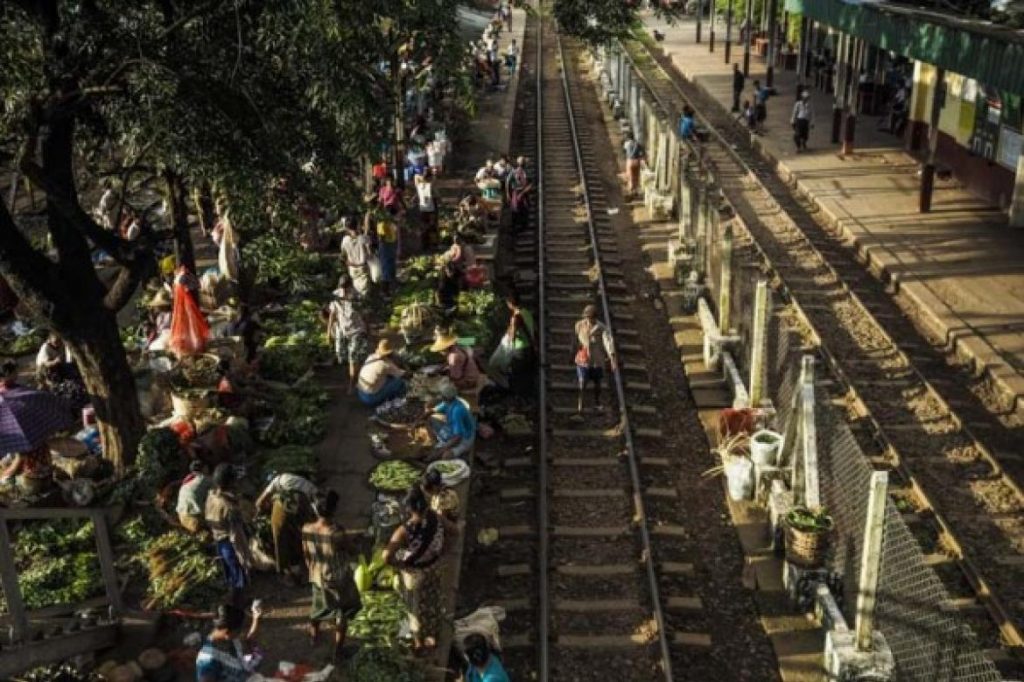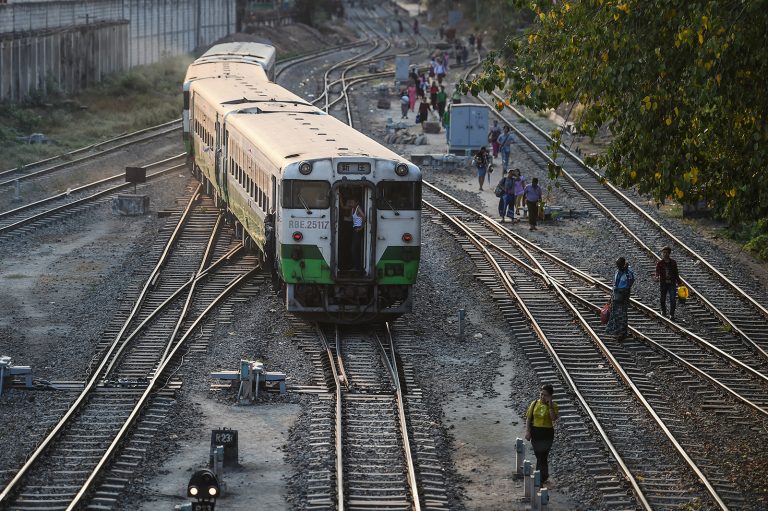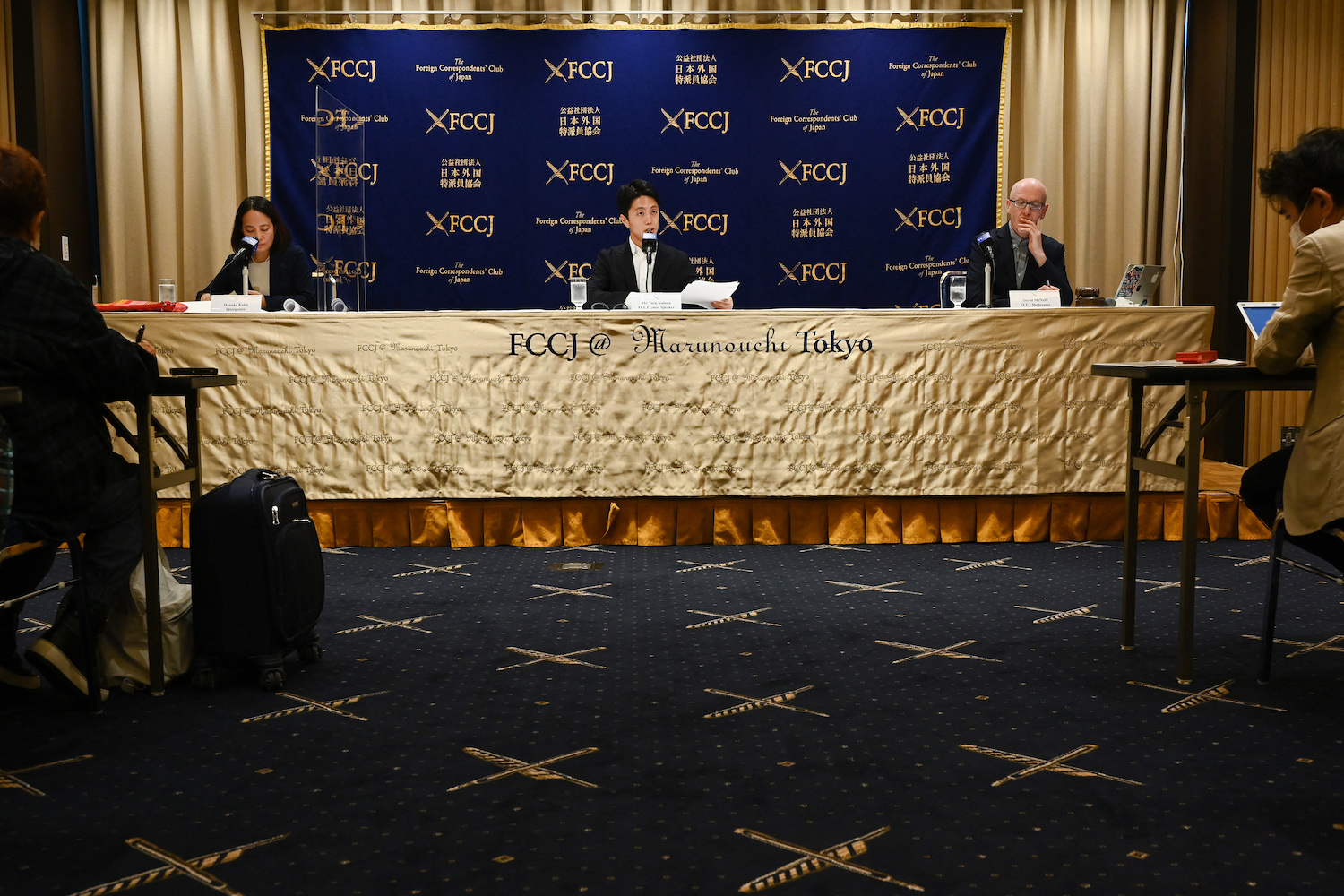A $250m upgrade funded by the Japanese government is good news for commuters, who have long been waiting for better service on the Yangon Circle Line railway.
It’s never a surprise for Circle Line commuter Ma Hla Su Khine, 24, when the train is an hour late or if it doesn’t come at all.
If there’s no train it wreaks havoc with her daily transport budget of K100 because Ma Hla Su Khine will have to spend K400 (about US$0.31) on a bus fare.
Ma Hla Su Khine lives in outer northeastern South Dagon Township and has used the Circle Line almost every working day since 2010, when she started her first job, in downtown Yangon.
“The train is essential for my daily routine because buses are a bit expensive for those of us at the grassroots level,” said Ma Hla Su Khine. “We rely on the train so much; if it doesn’t run we have the choice of either missing work for a day or paying more to take the bus,” she told Frontier.
Relying on the unreliable train for six days a week can disrupt her budget that is carefully balanced between food and transport costs.
Unexpected daily costs
Support more independent journalism like this. Sign up to be a Frontier member.
Ma Hla Su Khine’s monthly income is K80,000 (about $62.50), of which K60,000 goes to supporting her parents and K10,000 is for accommodation, leaving K10,000 for food and transport. If she is able to travel on the Circle Line every day, she can keep her transportation costs to K1,500 a month. If Ma Hla Su Khine has to take a bus, it costs K500 a day.
Ma Hla Su Khine’s daily commute begins with a K100 bus trip to Toe Gyaung Galay, the closest Circle Line station to South Dagon.
Data gathered during the 2014 census found that Yangon has a population of more than five million, but few residents use the Circle Line. A paper published by Tokyo University’s Graduate School of Public Policy in March 2012 estimated that 130,000 passengers used the Circle Line each day, or only 2.6 percent of the city’s population. In 2011 the estimate was 100,000 passengers a day.
For Ma Hla Su Khine and the many other low-income earners who rely on the Circle Line, a more comfortable commute won’t come a day too soon. A service that operates to a timetable will also be welcome because for many commuters who use the Circle Line, late trains are the cause of an unnecessary expense.
Ko Tun Oo, 30, a Circle Line commuter for eight years, is often fined by his employer for being late at work because the train was late. Or slow. Ko Tun Oo lives in Mayangone Township and the journey downtown can take almost one hour.
“I’ve worked at three different companies in the downtown area and the only problem I’ve faced is lateness because of the train,” he said. “It definitely affects our salary,” said Ko Tun Oo, who earns K120,000 a month, of which lateness fines can account for up to K10,000.
“I tell my friends that the train is eating our salary every month,” Ko Tun Oo said with a laugh.
Circle Line trains are late regardless of the time of day. A group of 10 passengers interviewed at random at Yangon Central Railway Station said evening rush hour departures are two hours’ late an average of about 10 days a month.
Under-resourced
Commuters also complain that telephone help lines at stations do not work and not enough information is provided about service times, including delays. Officials at Central Railway Station told Frontier that commuters are advised about late and cancelled trains but this was denied by passengers.
“No one announces if trains are late or cancelled, so we need to decide whether to take a bus or wait in hope that a train will eventually arrive,” said Ma Mon Mon Htwe, a civil servant and regular Circle Line commuter.
Commuters waiting for a better service on the 28-mile (46-kilometre) Circle Line received some good news earlier this year.
On July 4, Japanese Prime Minister Shinzo Abe pledged to modernise the Circle Line and committed to provide a $250 million soft loan for the upgrade. The Japanese government, though its overseas aid body, the Japan International Cooperation Agency, is providing new trains and signalling equipment, JICA said in a statement in August. State-owned Myanma Railways will be responsible for track upgrades and tendering for renovations to the 38 stations on the line.
Japanese carriages have begun being tested for use on the line, state-owned media has reported.
“We don’t need new trains at all. I think we’re fine with the current trains,” said Ko Tun Oo. “We just want the trains to run on time.”
“I have waited for a train every day for the past five years, but it has never once arrived on time,” Ma Hla Su Khine said.







